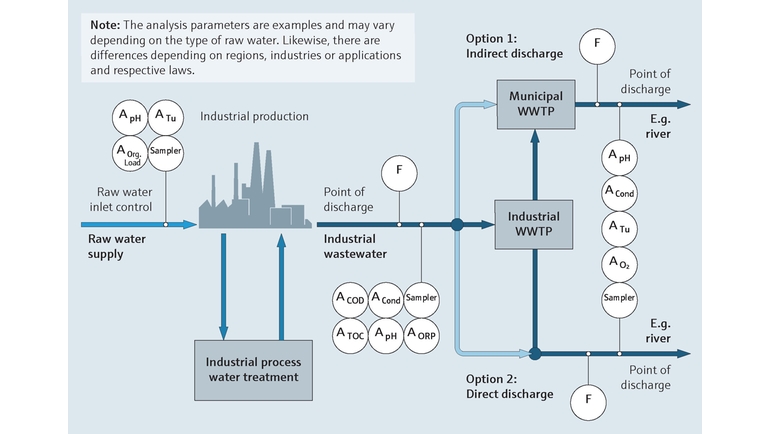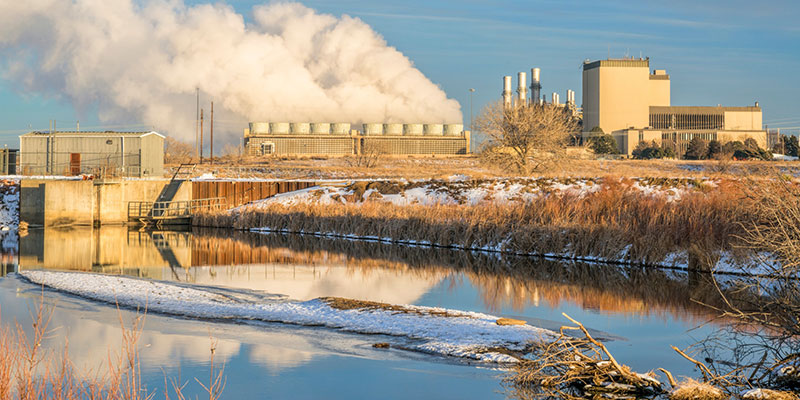Industrial Waste Water Treatment-- Customized Solutions for Effective Wastewater Treatment
Industrial Waste Water Treatment-- Customized Solutions for Effective Wastewater Treatment
Blog Article
Obstacles and Solutions in Industrial Waste Water Treatment
The treatment of commercial wastewater offers a complex variety of difficulties, ranging from stringent governing conformity to the ins and outs of expense management and technical constraints. The irregularity in waste structure even more makes complex the performance of standard treatment methods, often resulting in escalated functional expenses.
Regulatory Compliance Difficulties
How can industrial centers navigate the complicated landscape of regulatory compliance in wastewater therapy? The regulatory structure controling wastewater administration is multifaceted, usually varying by territory and kind of industry.
To properly manage these compliance obstacles, facilities must apply robust tracking and reporting systems that ensure real-time data collection and analysis. Normal audits and risk assessments can determine possible compliance gaps, enabling aggressive adjustments in treatment procedures. Worker training programs concentrating on regulative understanding and ideal practices are important to cultivate a society of conformity within the company.
In addition, engaging with governing agencies can supply valuable understandings and clarify uncertain laws. Facilities may additionally take advantage of seeking advice from ecological experts that concentrate on wastewater treatment conformity, ensuring that they stay informed of evolving policies. By taking on these strategies, industrial centers can not just meet compliance needs yet also improve their functional performance and environmental stewardship.
Expense and Financial Obstacles
Browsing regulatory compliance in wastewater treatment commonly presents significant monetary difficulties for commercial centers. The costs related to carrying out needed therapy modern technologies, maintaining conformity with rigorous laws, and taking care of operational expenditures can be discouraging. Numerous organizations encounter high preliminary capital expenditures for the construction or upgrading of wastewater treatment plants, which may stress spending plans, specifically for small and medium-sized enterprises.
Furthermore, ongoing operational costs, consisting of upkeep, chemical, and labor inputs, contribute to the financial concern. The unpredictability of fluctuating energy rates and the possible requirement for extra investments to meet evolving regulations exacerbate these financial stress. In most cases, the absence of economic rewards or support from government bodies makes it also a lot more difficult for companies to justify financial investments in sophisticated treatment systems.
In addition, the financial practicality of wastewater treatment remedies is commonly questioned, particularly for sectors with limited revenue margins. For that reason, it is vital for industrial centers to check out cost-effective approaches, such as taking on ingenious financing alternatives, taking part in partnerships, and leveraging arising modern technologies that can assist mitigate these financial barriers while ensuring conformity with environmental criteria.

Technical Limitations
Various technical constraints prevent the performance of industrial wastewater therapy procedures. One considerable obstacle is the insufficiency of existing therapy innovations to resolve complex pollutants. Lots of conventional techniques, such as activated sludge and chemical precipitation, battle with the removal of emerging toxins, consisting of pharmaceuticals and microplastics. This restriction typically results in the discharge of improperly dealt with water, which can have detrimental ecological effects.
Furthermore, the scalability of therapy innovations postures a difficulty. While some innovative methods, like membrane layer filtration or sophisticated oxidation, reveal guarantee in regulated environments, their application on a bigger scale can be excessively pricey and technically difficult. Maintenance and operational intricacies better complicate the adoption of these systems, specifically for smaller industries with restricted technological knowledge.
The assimilation of real-time monitoring technologies likewise continues to be insufficient in numerous treatment centers. Without reliable surveillance systems, operators can not effectively assess treatment efficiency or discover possible failings, bring about irregular effluent quality. Consequently, dealing with these technical restrictions with check study and growth, along with financial investment in innovative solutions, is essential for improving the effectiveness of industrial wastewater More Bonuses treatment and guaranteeing regulatory compliance. Industrial Waste Water Treatment.
Irregularity in Waste Structure
In the realm of commercial wastewater therapy, the irregularity in waste structure presents a formidable obstacle. Industries produce wastewater with diverse qualities, affected by aspects such as manufacturing processes, basic materials, and operational techniques. This heterogeneity makes complex the therapy process, as conventional systems frequently struggle to properly attend to the large range of toxins present.
For example, wastewater from food processing may have high levels of raw material, while effluents from chemical manufacturing might include heavy metals and dangerous materials. This variance necessitates versatile treatment techniques to guarantee conformity with environmental laws and safeguard public wellness. Furthermore, variations in waste structure can take place over time, affected by changes in production timetables, maintenance tasks, or the intro of new items.

Ingenious Treatment Solutions
Ingenious therapy options are important for resolving the complexities of commercial wastewater management. Standard approaches commonly fall brief in efficiently eliminating a vast array of contaminants, especially in centers with diverse effluent streams. Recent innovations concentrate on incorporating cutting-edge innovations to boost treatment effectiveness and sustainability.
One encouraging find out method is the usage of advanced oxidation processes (AOPs), which take advantage of effective oxidants to degrade organic contaminants. AOPs, including photocatalysis and ozonation, can dramatically minimize poisonous compounds and improve effluent high quality. In addition, membrane layer bioreactor (MBR) technology has gotten grip, incorporating organic therapy with membrane layer purification, resulting in premium effluent and minimized impact.
An additional cutting-edge remedy is the execution of source recuperation systems. Strategies like anaerobic food digestion not just deal with wastewater yet additionally generate biogas, which can be used as a renewable power resource. In addition, the fostering of fabricated knowledge and artificial intelligence models can optimize therapy procedures by forecasting variations in wastewater make-up, therefore boosting functional effectiveness.
These cutting-edge options not only address regulatory conformity however also advertise ecological sustainability, leading the way for a much more resilient and reliable commercial environment.
Final Thought
To conclude, resolving the difficulties of industrial wastewater therapy requires a complex method that incorporates regulative conformity, expense monitoring, and technological innovations. Ingenious solutions, such as sophisticated oxidation processes and membrane bioreactor modern technology, offer paths to enhance therapy efficiency. Moreover, real-time monitoring systems and collective engagement with regulative firms can promote sustainable techniques while reducing financial stress. A dedication to constant enhancement in therapy methodologies will eventually add to the reliable management of industrial wastewater and environmental management.
The therapy of industrial wastewater presents a multifaceted array of difficulties, ranging from rigorous regulatory compliance to the complexities of price management and technological limitations. Industrial Waste Water Treatment.Navigating regulatory compliance in wastewater therapy usually offers substantial economic obstacles for commercial facilities. Dealing with these technological limitations via study and growth, together with investment in innovative options, is vital for improving the effectiveness of industrial wastewater therapy and guaranteeing governing compliance
Wastewater treatment facilities have to spend in robust monitoring systems and adaptable therapy modern technologies capable of fitting varying influent features.In verdict, attending to the challenges of commercial wastewater treatment requires a complex technique that integrates governing compliance, price administration, and technological innovations.
Report this page